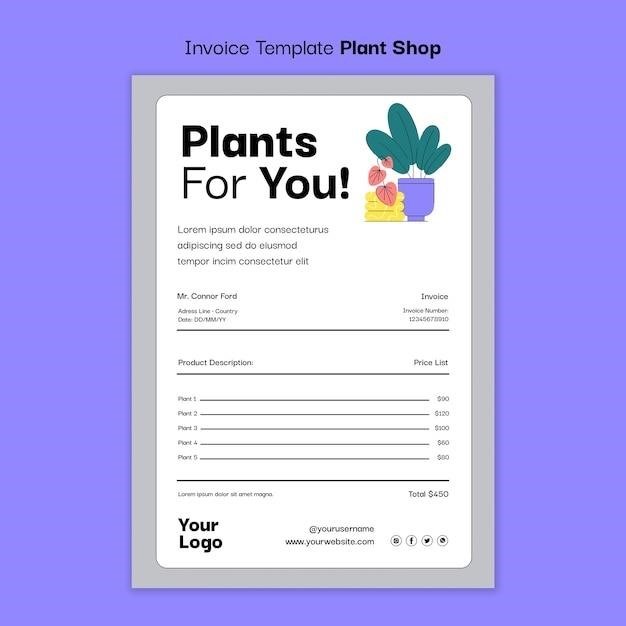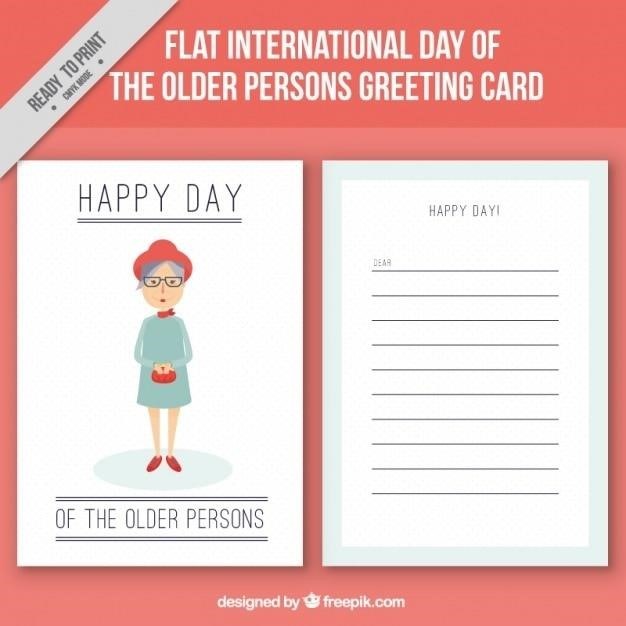

An employee handbook acknowledgment form is a form used by employers to document that an employee has viewed and agrees to the contents of the company handbook. This form serves as a legal record that the employee has been informed of the company’s policies and procedures. The form is typically signed by both the employee and a representative of the employer.
What is an Employee Handbook Acknowledgement Form?
An employee handbook acknowledgment form is a crucial document used by employers to formally record an employee’s understanding and acceptance of the company’s policies‚ procedures‚ and guidelines outlined in the employee handbook. It serves as a legal and practical tool for both the employer and the employee‚ ensuring clarity and transparency regarding workplace expectations‚ rights‚ and responsibilities.
Essentially‚ this form is a written confirmation that the employee has reviewed and comprehended the contents of the employee handbook. It acts as a formal agreement between the employer and employee‚ outlining the terms and conditions of employment‚ including crucial aspects like compensation‚ benefits‚ attendance policies‚ disciplinary procedures‚ and workplace conduct. By signing this form‚ the employee acknowledges that they have been made aware of these important details and agree to adhere to them.
The employee handbook acknowledgment form is a vital component of HR documentation‚ serving as a legal safeguard for the employer‚ demonstrating that the employee has been adequately informed about the company’s expectations. It also provides the employee with a clear record of their rights and obligations‚ fostering a more transparent and equitable work environment.
Purpose of the Form
The employee handbook acknowledgment form serves a multifaceted purpose‚ acting as a critical tool for both employers and employees in establishing a clear and legally sound framework for the employment relationship. It’s designed to achieve several key objectives‚ promoting transparency‚ accountability‚ and a mutual understanding of expectations within the workplace.
Firstly‚ the form provides a formal record that the employee has been made aware of the company’s policies and procedures. This documentation protects the employer from potential legal issues that could arise from employees claiming they were unaware of specific rules or regulations. It establishes a clear line of communication and eliminates any ambiguity surrounding the employee’s responsibilities and the company’s expectations.
Secondly‚ the form ensures that employees understand their rights and benefits. It serves as a reference point for employees to easily access information regarding compensation‚ benefits‚ leave policies‚ and other important aspects of their employment. This transparency fosters a more positive and trusting work environment‚ reducing confusion and fostering a sense of fairness.
Lastly‚ the form acts as a binding agreement between the employer and employee‚ confirming their mutual commitment to adhering to the outlined policies and procedures. This formal acknowledgment strengthens the employment relationship‚ promoting a culture of mutual respect and understanding. It serves as a foundation for a productive and harmonious work environment.
Key Components of the Form
An employee handbook acknowledgment form typically encompasses several key components that ensure its effectiveness in fulfilling its intended purpose. These components work together to provide a comprehensive and legally sound document that clearly outlines the expectations and responsibilities of both the employer and employee.
At the core of the form is a clear and concise statement acknowledging that the employee has received‚ read‚ and understood the contents of the company handbook. This statement should be worded in a way that leaves no room for ambiguity or misinterpretation. It’s essential to include a specific date of receipt to establish a clear timeline for when the employee became aware of the handbook’s contents.
The form should also include a section for the employee’s signature‚ confirming their agreement to abide by the policies outlined in the handbook. This signature serves as a legally binding commitment to adhere to the company’s rules and regulations. Additionally‚ the form often includes a section for the employer’s representative to sign‚ signifying their acknowledgment of the employee’s receipt and understanding of the handbook.
Depending on the specific needs of the company‚ the form may also include additional components such as a space for questions or comments from the employee. This provides an opportunity for employees to clarify any uncertainties they may have about the handbook’s contents. The form may also include a statement regarding the employee’s right to consult with legal counsel or a union representative‚ ensuring their awareness of their rights.
Benefits of Using an Employee Handbook Acknowledgement Form
Utilizing an employee handbook acknowledgment form offers numerous advantages for both employers and employees‚ fostering a clearer understanding of expectations and responsibilities within the workplace. This simple yet effective tool serves as a foundation for a more harmonious and productive work environment.
From an employer’s perspective‚ the form provides a legally sound record of employee awareness regarding company policies and procedures. This documentation serves as valuable protection in the event of any disputes or legal actions related to employee conduct or employment practices. The form also helps to reduce the risk of misunderstandings or misinterpretations‚ ensuring that employees are fully informed about their rights and obligations.
For employees‚ the acknowledgment form offers a clear understanding of what is expected of them and what they can expect from their employer. It provides a framework for a fair and transparent work environment‚ minimizing the potential for conflicts or disagreements. By signing the form‚ employees demonstrate their commitment to adhering to company guidelines and contributing to a positive work culture.
Ultimately‚ the use of an employee handbook acknowledgment form fosters a sense of mutual understanding and accountability‚ paving the way for a more productive and harmonious work environment. This simple yet valuable tool plays a crucial role in establishing a strong foundation for a positive and respectful employer-employee relationship.
How to Create an Employee Handbook Acknowledgement Form
Crafting an effective employee handbook acknowledgment form requires careful consideration of essential elements and a clear understanding of its purpose. The form should be concise‚ easy to understand‚ and legally sound‚ ensuring that both employers and employees are fully informed of their rights and responsibilities.
Begin by clearly stating the purpose of the form. Inform employees that this document serves as a record of their acknowledgment of having received‚ read‚ and understood the company’s employee handbook. Emphasize that the handbook outlines important policies‚ procedures‚ and expectations for all employees‚ and that by signing the form‚ they confirm their commitment to adhering to these guidelines.

Include a section for employee details‚ such as their full name‚ employee ID number‚ and date of receipt of the handbook. Provide a space for the employee to sign and date the form‚ indicating their agreement to the contents of the handbook. Consider including a section for the employer’s representative to sign and date the form‚ confirming that they have provided the employee with a copy of the handbook.
Ensure that the language used in the form is clear‚ concise‚ and easily understandable. Avoid using complex legal jargon that may confuse employees. If necessary‚ provide a brief explanation of any key terms or concepts. By following these steps‚ you can create an employee handbook acknowledgment form that is both informative and legally sound‚ fostering a clear understanding of expectations and responsibilities within your organization.
Examples of Employee Handbook Acknowledgement Forms
To illustrate the structure and content of an employee handbook acknowledgment form‚ let’s examine a few examples drawn from real-world organizations⁚
Example 1⁚ “HR EMPLOYEE HANDBOOK DISCLAIMER/ACKNOWLEDGEMENT FORM” This example‚ found in the context of the Town of Norfolk‚ clearly emphasizes the employee’s understanding of the handbook’s content. It includes a statement that the employee has received‚ read‚ and understood the Town’s employee handbook. This form exemplifies a straightforward approach‚ focusing on the employee’s confirmation of understanding.
Example 2⁚ “EMPLOYEE ACKNOWLEDGEMENT FORM” A concise form used by East Georgia State College‚ this example stresses the employee’s responsibility to adhere to the handbook’s guidelines. It acknowledges the receipt of the employee handbook and emphasizes the importance of understanding and adhering to the outlined policies and procedures. This form demonstrates a direct approach‚ emphasizing the employee’s commitment to following the handbook.
Example 3⁚ “EMPLOYEE HANDBOOK ACKNOWLEDGEMENT” This form‚ found in the context of a company named “Company Name‚” emphasizes the employee’s agreement with the policies and provisions outlined in the handbook; It includes a statement confirming the employee’s receipt of the handbook and their understanding and agreement to abide by its contents. This example highlights a clear and comprehensive approach‚ encompassing both acknowledgment and agreement with the handbook’s policies.
These examples provide a glimpse into the diverse approaches employed by organizations in crafting employee handbook acknowledgment forms. Each form reflects the specific needs and priorities of the organization‚ highlighting the importance of tailoring the form to the specific context of the workplace.
Where to Find Employee Handbook Acknowledgement Form Templates
Fortunately‚ numerous resources offer readily available templates for employee handbook acknowledgment forms‚ simplifying the process of creating a legally sound and effective document. Here are some of the most common sources⁚
Online Template Websites⁚ Websites like Template.net and Canva provide a wide range of customizable templates for various business documents‚ including employee handbook acknowledgment forms. These platforms offer user-friendly interfaces and often provide pre-designed templates that can be easily adapted to suit your specific needs.
HR Software Providers⁚ Many HR software providers‚ such as BambooHR and Zenefits‚ include pre-built templates for employee handbooks and accompanying acknowledgment forms. These templates are designed to integrate seamlessly with their HR systems‚ streamlining the process of managing employee onboarding and documentation.
Legal and HR Consulting Firms⁚ Professional legal and HR consulting firms‚ such as Littler Mendelson and Jackson Lewis‚ often provide sample templates and guidance on creating employee handbook acknowledgment forms. These firms offer valuable expertise in ensuring that your forms comply with relevant employment laws and regulations.
Online Legal Resources⁚ Websites like Nolo and LawDepot provide access to legal forms and templates‚ including those related to employee handbooks and acknowledgment forms. These platforms offer readily available templates and often include guidance on legal requirements and best practices.
By leveraging these resources‚ you can easily access templates for employee handbook acknowledgment forms‚ saving you time and effort in creating a compliant and effective document.
Tips for Using an Employee Handbook Acknowledgement Form
Maximizing the effectiveness of an employee handbook acknowledgment form requires careful consideration and implementation. Here are some key tips for ensuring its successful use⁚
Clarity and Conciseness⁚ The form should be written in clear‚ concise language‚ avoiding any technical jargon or ambiguous wording. Ensure that employees can easily understand the content and the implications of signing the form.
Comprehensive Coverage⁚ The form should clearly state that the employee has received‚ reviewed‚ and understands the contents of the employee handbook. It should also explicitly acknowledge the employee’s agreement to adhere to the policies and procedures outlined in the handbook.
Separate Signatures⁚ Ensure that the form includes separate signature lines for both the employee and a representative of the employer. This allows for clear documentation of the acknowledgment process.
Secure Storage⁚ Maintain secure storage of the signed acknowledgment forms. This can include both physical filing systems and electronic databases. Ensure that access to these records is restricted to authorized personnel.
Regular Review and Updates⁚ Regularly review and update the employee handbook acknowledgment form to ensure its continued relevance and accuracy. This should be done in conjunction with any updates to the employee handbook itself.
By following these tips‚ you can optimize the use of an employee handbook acknowledgment form‚ promoting a clear understanding of company policies and procedures and fostering a compliant and productive workplace.